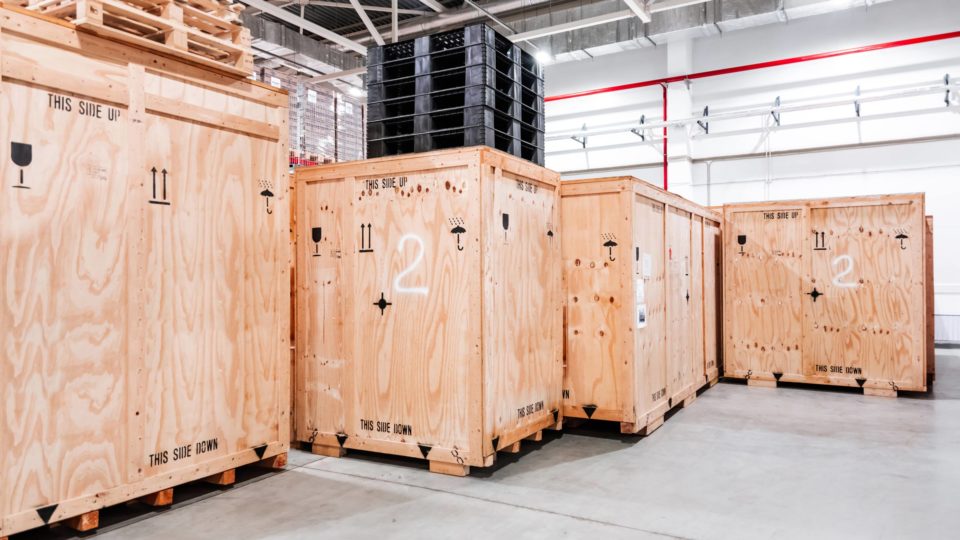Posted On May 23, 2022
When it comes to moving large machinery, regular old boxes just won’t do. But there’s a science to designing, building and packing crates that’s incredibly important for both successful shipping and companies’ bottom lines.
The importance of crating machinery
Industrial equipment is rarely inexpensive. That’s why investing in dependable crating services for machinery moving is so important. We’re not aware of any companies that are interested in spending hundreds of thousands of dollars—or more—on a piece of equipment only to have it rusted, dented or damaged during transport.
But what type of machinery requires custom crating?
There’s no one answer. In general, specialty crating is used for oversized, heavy, oddly shaped or fragile items. Most of Flat World’s custom crating projects happen when companies need to ship and install new equipment or execute a plant relocation. Our machinery crating services cover everything from IT servers and medical equipment to industrial machinery weighing many tons.
Some heavy equipment can definitely be shipped in standard crates, but this blog will focus on machinery types that require a custom build—and what needs to be considered to make sure the cargo makes it to its final destination intact and damage-free.
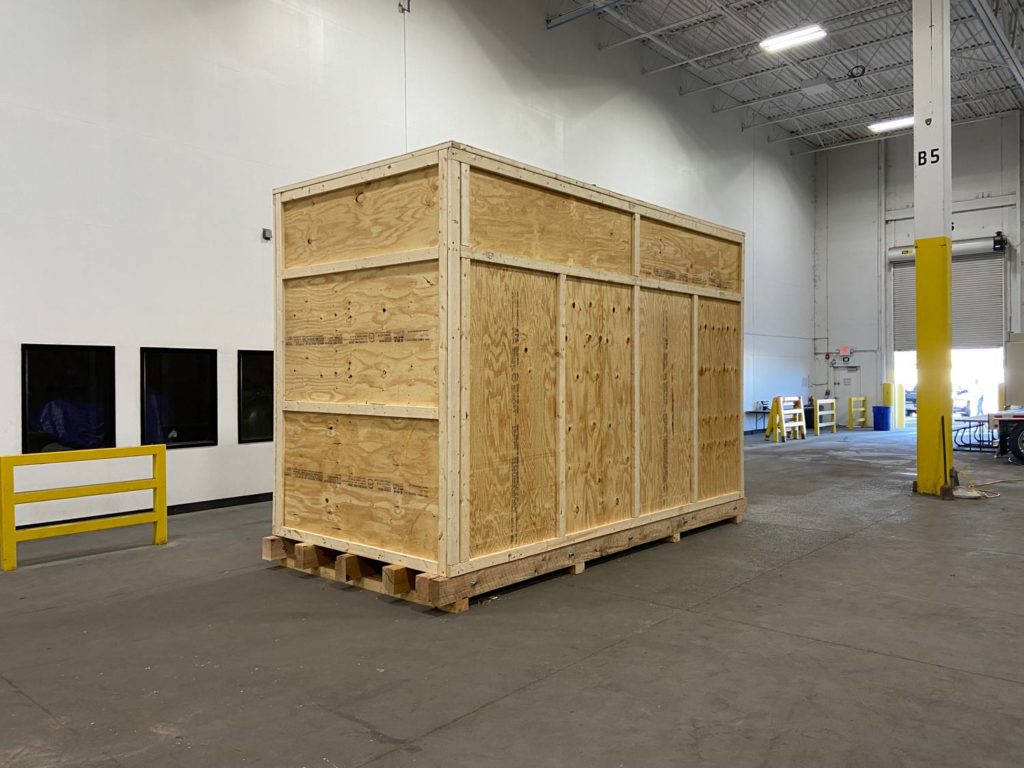
Industrial machinery crating checklist
Whether you’re working with a custom-crating services partner or crating heavy equipment on your own, this checklist will help ensure the equipment is protected, safe and shipped effectively and efficiently.
Here’s how to get started.
Get a visual.
When crating heavy machinery, it’s imperative that the crating team have an idea of the product they’re packaging.
Having the weight and dimensions of the machine might sound like enough, but it still leaves a lot of questions, such as, is the weight spread evenly over the base or are some parts heavier than others?
Seeing the machinery in person is ideal but not always possible. Providing photos, CAD drawings with specifications and other visuals can also help.
Keep timing in mind.
Custom packaging and machinery moving for equipment worth millions of dollars should be done carefully and methodically—and that means not rushing. Depending on the machinery, designing and building the crate can take up to a week, plus a few days on-site to load the equipment and get it ready for transit. Always remember to include time for crating and packaging into the shipping timeline.
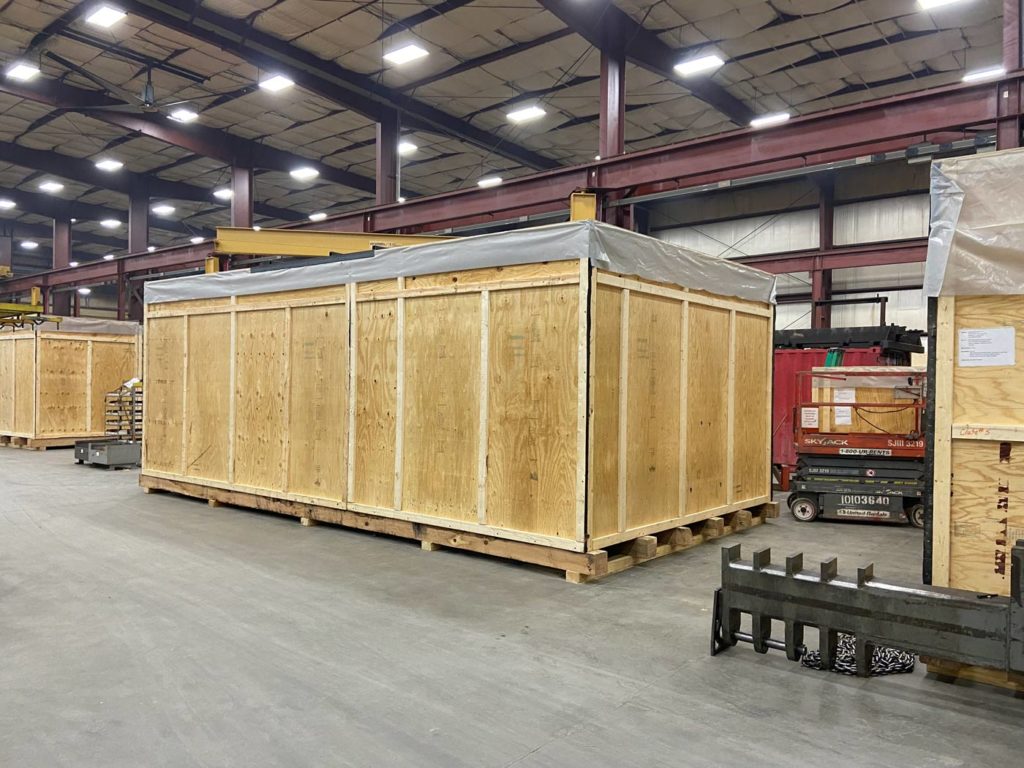
Prep the heavy equipment.
Industrial machinery is usually as complex as it is bulky. And because most large machinery isn’t designed to undergo frequent transport, shippers need to take steps to prepare the machinery before a single component gets packed away. Preparation might include taking out batteries, draining fluids, securing clamp plates, locking machine parts into position, unhooking electrical equipment and disassembling sections of the machinery.
Because of the expertise needed to work with the equipment, these steps need to be done by the manufacturer or shipper—not the crate builder.
Outline the journey and transportation needs.
Where the equipment is going and how it will get there is just as important to consider as the crating itself. The outside dimensions of the crate or crates needs to be determined from the very beginning. It’s not unheard of for a piece of heavy equipment to be prepped and crated only for the manufacturer or carrier to discover that the crate is too large to go through the facility dock door.
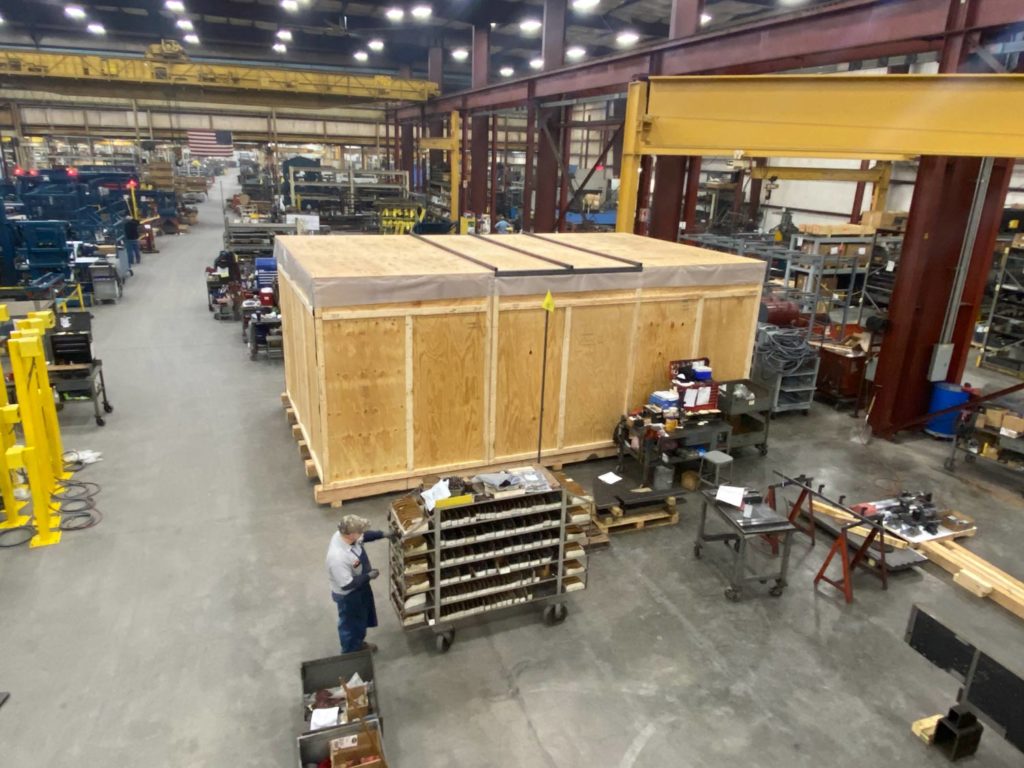
Shippers also need to ask about what shipping modes will be used to transport the containers. Will the crate be moved via forklift or overhead crane? Will it be side-loaded onto a flatbed, or end-loaded in a container or van trailer? Will transit entail air, rail, ocean, road or a combination? And is any storage required along the way? Knowing these details prevents transportation hiccups but also benefits the base construction and design process as well.
Ideally, the crating partner you use will also be able to help organize and plan transportation as well, ensuring a smooth process at every step.
Don’t skimp on materials.
Using the right materials is crucial to any machinery moving project. The equipment needs to be protected both from the elements and general movement during transport.
ISPM-15 certified lumber – It all starts with lumber. Wood needs to be heat-treated to kill off any invasive or non-native species like bugs, funguses and mold. This is especially important for export crating, as most countries require crates entering the country to have an ISPM-15 certified stamp.
Desiccate bag – Everyone knows the stamp-sized bags labeled “Do not eat,” that come in shoe boxes and purses. Known as desiccate bags, larger versions are also used to absorb moisture when shipping machinery. These are especially important for international shipments that are being transported by ocean.
Vapor corrosion inhibitor – Another way to prevent water damage and rust on metal goods and machinery is by using vapor corrosion inhibitors, or VCIs. Flat World applies VCIs with a heat gun or flame thrower, adding a thin, protective layer that can protect against water, oxygen and other contaminants.
Design and build the crate.
In addition to ensuring items will be kept safely in place and protected from the elements, the crating and shipping team also needs to consider how the containers will be moved. Distribution of weight is key in designing and building an adequate base for support. The less surface area that’s in contact with the base, the more pressure per square inch there is in those areas, and design considerations need to support and distribute that weight accordingly.
Pack and prep for appropriate handling.
Machinery packing should be methodical, which is why it often takes a couple days to complete. Packaging services teams need to remember that carriers and movers can’t see the machine that’s enclosed inside and have no idea how it was lifted or moved before it got to them, so crates need to be marked for adequate handling. For example, when crane loading crates onto a truck or ship, Flat World’s team marks where the slings, chains and/or straps need to be placed for a safe, level lift.
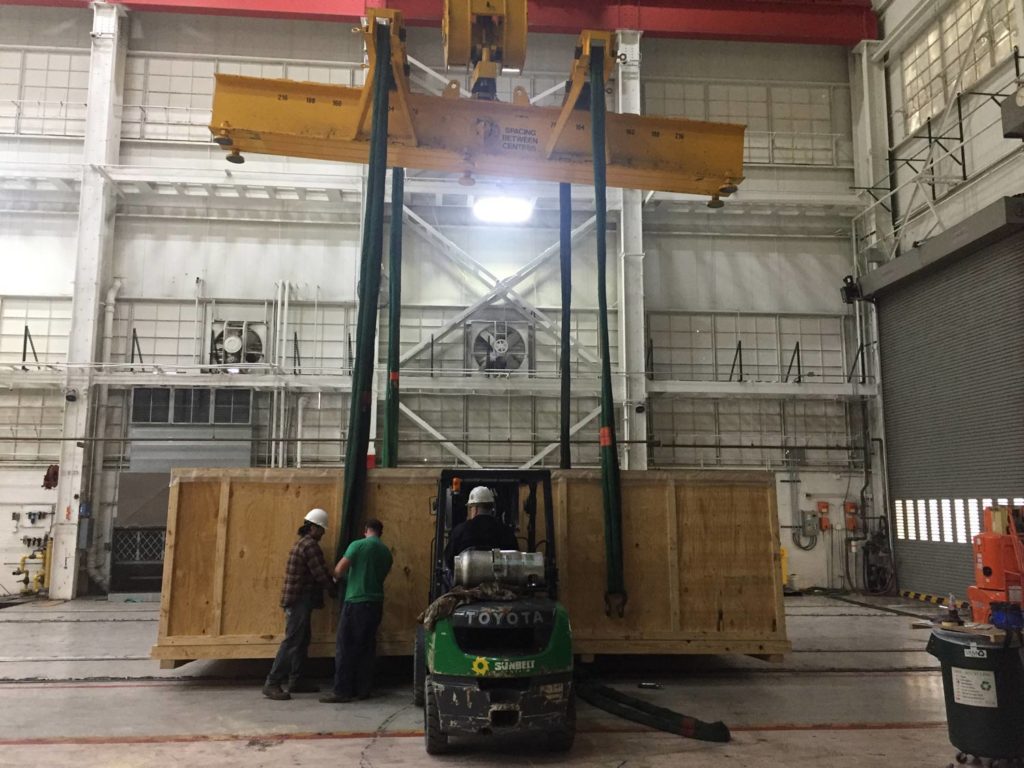
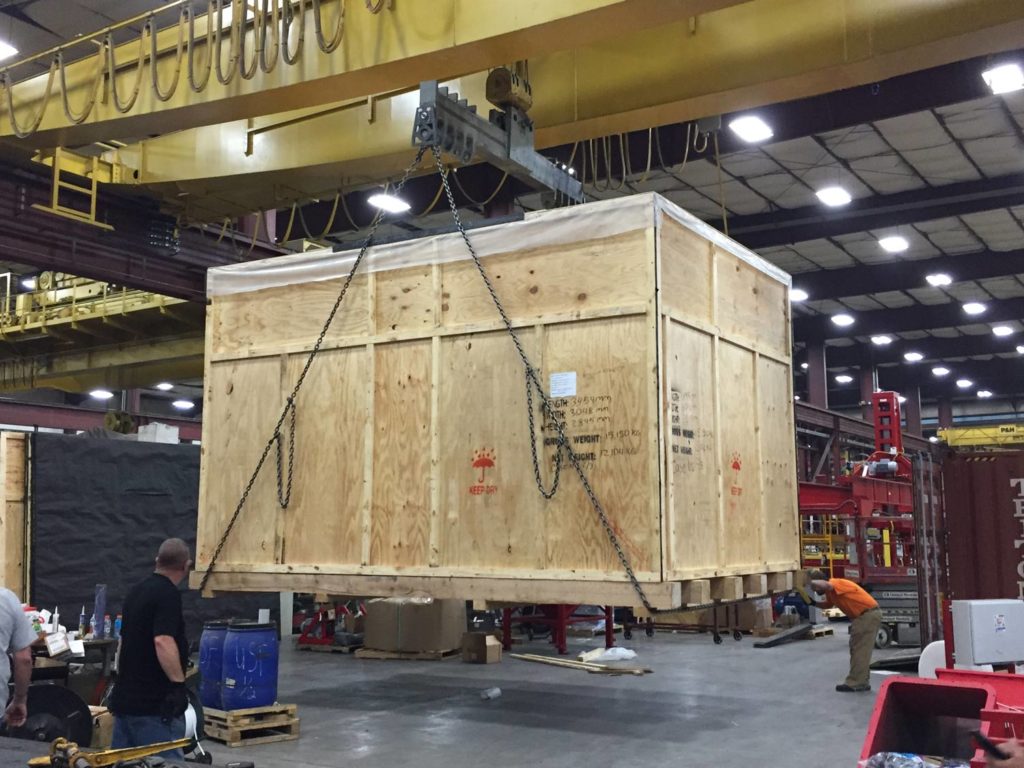
Finding the best crating services for industrial equipment
While companies can certainly build crates and containers in-house, partnering with a certified specialty crating company is a safer bet for making sure your heavy equipment arrives safely.
A crating services business will already have the required certifications needed to export goods, as well as any specialty materials needed to pack and protect the shipment during every step of its journey.
When evaluating potential partners, remember that expertise and extensive experience are vital. While no custom crating company has built crates for every type of machine on earth, the business should have the capabilities and knowledge to draw from past experience and design a crate that will meet your needs. Ideally, the company will also have a freight forwarding arm that can handle shipping services to safely transport your goods.
If you have questions about packaging, crating and shipping heavy machinery, or would like a custom quote for your large items, contact us to get started. Our custom crating team has experience building crates of all types and sizes and is ready to help you with your shipment.
